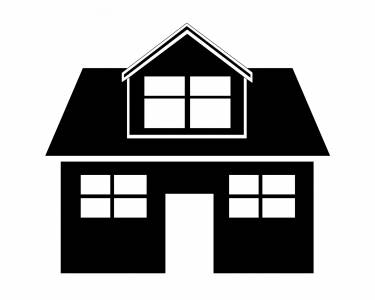
New realtor.com® survey finds that with the right technology, nearly a quarter of people would be open to buying a home without seeing it in person first
Realtor.com released the results of a new consumer survey this week highlighting COVID-19’s impact on home buying, selling and moving in the age of social distancing. The survey found that consumers, especially younger demographics, want virtual tours and are warming to the idea of buying a home without visiting it in person.
Realtor.com® and Toluna Insights surveyed 1,300 consumers during the week of April 5 to better understand their thoughts on how this pandemic has impacted current living arrangements, future plans and feelings about technology’s role in buying and selling homes.
Majority of living situations remain stable, but COVID-19 has sparked some changes
Eighty three percent of survey respondents noted that their living situation has not changed due to COVID-19. Of those who have experienced a change, 8 percent moved in with immediate family, 6 percent moved in with a partner, 2 percent moved in with extended family and 2 percent moved in with a new roommate. The survey also revealed that 68 percent of respondents say that their plans to move (or their plans not to move) have not changed. Of those whose plans have changed, 9 percent weren’t planning to move but now need to and 14 percent canceled their plans to move. Further, 9 percent will now rent rather than buy and 7 percent will buy rather than rent. This data points toward some level of stability in the housing market.
Younger demographics and renters feel more comfortable moving sight unseen
Despite the threat of COVID-19 and social distancing measures, the majority of people still want to see a home in person before making a purchase, but that sentiment is shifting. With access to accurate listing data, detailed photos, virtual and live video tours, 24 percent of people would be willing to buy a home without seeing it in person and 30 percent would be willing to rent one. Those numbers were slightly higher for younger demographics, of whom 29 percent would be willing to buy and 34 percent willing to rent. Further, 21 percent of people agree that COVID-19 has made them more likely to move into a home sight unseen.
“Uncertainty around COVID-19 and limitations around social interactions and group gatherings like open houses have made buying and selling homes more difficult than ever,” said Nate Johnson, CMO, realtor.com®. “As real estate agents and consumers seek out ways to safely complete these transactions, we believe that technology will become an even more imperative part of how we search for, buy and sell homes moving forward.”
Virtual tours, listing and neighborhood information are critical for buying during COVID-19
The biggest share of respondents (47 percent) still prefer to see a home in person with a buyer’s agent. Given new social distancing guidelines, 23 percent prefer to go alone, 13 percent prefer an online video tour and 6 percent would like their agent to go to the home and show it via video chat.
When asked to select which technology features would be most helpful when deciding on a new home, responses in order of preference were:
- A virtual tour of the home (61 percent)
- Accurate and detailed listing information (58 percent)
- Accurate and detailed neighborhood information (53 percent)
- High quality listing photos (51 percent)
- The ability for my agent or landlord to walk me through the property via video chat (39 percent)
Sellers are wary of open houses but open to listing photos and virtual tours
When asked about selling a home within the next six months, respondents showed a slight discomfort toward holding open houses, but were still generally open to allowing their agent and some shoppers inside. Potential sellers are most comfortable with:
- Allowing their agent in the home to take photos (56 percent)
- Allowing their agent in the home to give a virtual tour (55 percent)
- Having an agent walk a buyer through the home in person (47 percent)
- Having an agent walk a buyer through the home via video chat (44 percent)
- Holding an open house (35 percent)


Chattooga Local News
AdventHealth Redmond ranked #4 in Georgia Trend’s 2024 Top Hospitals

Chattooga Local News
Beloved Rescue Dog Rooster Tragically Killed by FedEx Driver, Community Mourns

Chattooga Local Government
Andy Allen to Be Sworn In as Chattooga County’s Sole Commissioner Today

Bulloch Public Safety
12/23/2024 Booking Report for Bulloch County

Bulloch Public Safety
12/23/2024 Booking Report for Bulloch County

Bulloch Public Safety
12/09/2024 Booking Report for Bulloch County

Bulloch Public Safety
12/02/2024 Booking Report for Bulloch County

Bulloch Public Safety
12/16/2024 Booking Report for Bulloch County

Bulloch Public Safety
12/12/2024 Booking Report for Bulloch County




